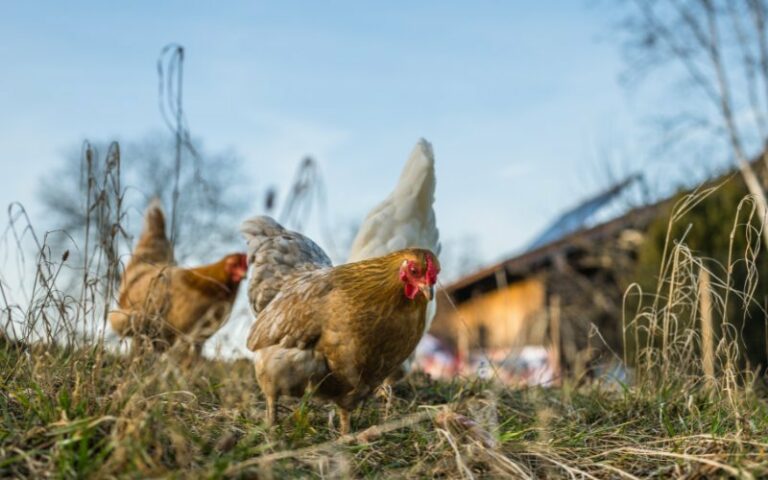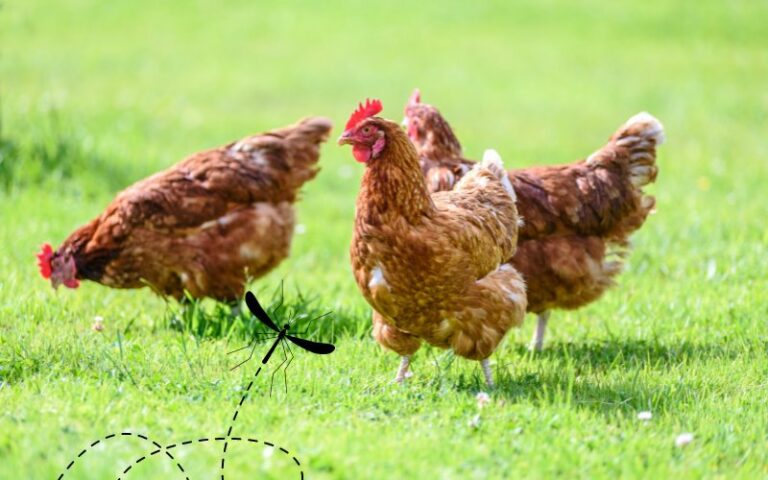Alternatives to Heat Lamps for Chickens (8 to Consider)
When you purchase chicks, you usually receive a cardboard box full of tiny fluffy chicks – without any mother hen to keep them warm. As a result, farmers have to find a way to mimic that heat. Especially during the night and in the winter season, heat is essential for young chicks. Heat lamps are often the solution farmers choose.
I’ve used heat lamps for years, and while they can be quite effective, they’re a huge pain. They burn out or turn off unexplainably and finding the right height to create the right amount of warmth is always a process. When things go wrong, it can often be fatal for one or more of those adorable balls of puff. It’s always a relief when my chicks grow up a little and no longer need the warmth of a heat lamp.
However, heat lamps aren’t the only way to raise baby chicks. You can try some other strategies that eliminate the need for heat lamps and the headaches that come with them. Just because heat lamps are the most common method for keeping chicks warm doesn’t mean that alternatives can’t work just as well – or better. And, even if you plan to use heat lamps, it’s a good idea to know some of these other strategies just in case things go wrong.

Alternatives to Heat Lamps for Chickens (The Short Answer)
Whether you choose a commercial solution like a heat plate or a non-electric method like feather dusters, heat lamps aren’t the only option. However, depending on how cold it gets, how many birds you have, and how big of an enclosure they live in, you may need to use certain methods or more than one method to provide warmth.
What Can You Use Instead of a Heat Lamp for Chickens (8 Ideas)
Whether you’re looking for a backup plan to finicky heat lamps or you’re trying to find a completely different method, here are some of my favorite heat lamp alternatives.
Mother Hen
Purchasing chicks from a hatchery or hatching them in an incubator aren’t the only ways to get baby chicks. Consider allowing your hens to hatch their own. If baby chicks are in with a mother hen, they won’t need any heat source as they’ll simply stay near their mother for warmth.
If you decide to raise chicks this way, keep the chicken breed in mind as some breeds are better at raising young chicks than others. You’ll also need a rooster, and the process will take a little longer than it takes to ship chicks.
You might be able to get a hen to adopt chicks that aren’t her own. While this doesn’t always work, it might be worth a shot, especially if your hen already has some chicks of her own.
Heat Plates
Heat plates have a similar concept as heat lamps – they plug into an outlet and create a heat source for your baby chicks. However, they don’t have the risks of fire and shattered glass. They also don’t produce light that may irritate your chicks or disrupt their sleeping habits.
Heat plates are exactly what they sound like – a plate that plugs in and creates a heat source that chicks can gather around. Some designs include features that deter chicks from climbing on top and creating a mess.
Heat plates may have either a horizontal or vertical design. Horizontal heat plates mimic a mother hen; chicks gather underneath it as they would underneath a hen. They can be raised as your chicks get bigger and taller. Vertical heat plates make more sense for older chicks, chickens, and other birds as they won’t outgrow them. Consider purchasing a heat plate that can be used either horizontally or vertically; these are versatile and can be used for chickens of any age.
Heat Emitter
Heat emitters look pretty much identical to heat lamps, but do not create light that disturbs chicks’ sleeping patterns. Without a glass bulb, there’s no chance of shattered glass and less of a fire risk. Heat emitters create heat similar to heat lamps but without many of their downsides.
Light Bulbs
Overheating is actually more of an issue than you might think for chicken owners using heat lamps. For example, if you keep your baby chicks in an indoor area, or if your brooder is especially small, a heat lamp can quickly bring the temperature up to uncomfortable or dangerous levels.
Regular light bulbs might be the solution. You can simply use a desk lamp as a heat source. Adjustable ones make it possible to raise or lower the light to decrease or increase the heat.
Heating Pads
Heating pads are a great way to give your chicks a steady heat source, but they can short if the cord gets wet. Don’t simply stick a heating pad in with your chicks; instead, put it under the brooder or under bedding or a towel. Heating pads can also be used similarly to heat plates if you build a frame for them or place them on top of a wire basket.
You can purchase a regular heating pad or use one you already have, or you can purchase one made specifically for chickens.
Hot Water Bottles
This solution is incredibly simple – hot water bottles. They can be quite high maintenance as they need to be replaced very often, but they will provide temporary warmth for your chicks and they don’t require electricity. If you stay on top of it, hot water bottles are one of the safest heating options out there.
You probably already own a number of bottles that will work as hot water bottles. Be sure to insulate them with a towel before letting your chickens access them. This will keep the bottles warm longer and protect chicks from getting burnt.
Feather Duster
If you’re looking for another solution that doesn’t involve electricity at all, try giving your chicks a few feather dusters to gather under. The feathers mimic a mother hen, and, as long as a few chicks are gathered underneath it, they’ll get to share each other’s body warmth and the feathers will trap all that warm air right next to their bodies.
This method may not be sufficient for very young chicks who are out in cold conditions, but it’s a great solution for older chicks that have started regulating their own body warmth.
Deep Litter Method
On a similar note, you can also offer your chicks better insulation using the deep litter method. In the wintertime, when it’s particularly cold, simply layer new bedding on the old. This creates a deep layer of insulation between the birds and the cold ground.
Depending on how big the brooder is, how old your birds are, and how cold the weather is, this method may or may not be enough to keep the temperature sufficiently warm. However, it will increase the efficiency of many of these other heat lamp alternatives.






